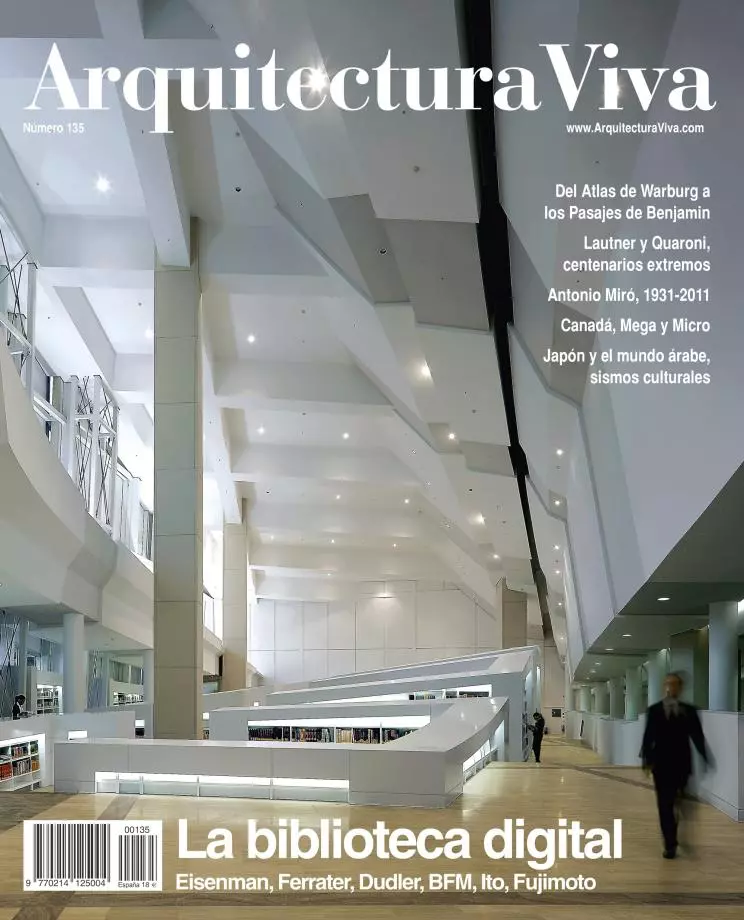
If a book is a machine for thinking, then libraries are thought factories. The tools of these intelectual industries, however, are undergoing a complete transformation in these days, and the digital book triggers the contemporary transition of libraries from architectural space to the computer node. The first revolution of writing, almost two thousand years ago, replaced the roll by the codex, and the extraordinary innovation of bound pages enabled a comfortable and fast access to the information enclosed between its covers; the second revolution, more than five hundred years ago, replaced the manuscript with printing, and mechanical reproduction led to a spectacular multiplication of texts; the third, which we are now witnessing, has spurred a transition from printed matter to digital information, and with it a huge explosión of availability and access.
From papyrus to parchment, from parchment to paper and from paper to bytes. Covering this route one soon sees that the last metamorphosis is rather different than the previous one, because when passing from the material universe of rolls, codices or books to the virtual world of networks the spatial needs of conventional libraries fade away. From the classical world to the 20th century, libraries have been at once deposits for manuscripts or printed matter and places in which to study them, but neither one nor the other seem essential nowadays: both storage areas and reading halls will be – most seem to think – progessively replaced by computer files and individual screens, thereby making specific buildings unncessary and rendering our beloved libraries superfluous architectures, built fossiles of an information age that is reaching its demise. Is that indeed their fate?
Even though the present troubles of booksellers and editors may describe a landscape of crisis, libraries still have justified hopes for survival, as evidenced by the adaptation of large institutions to the web’s demands – which they have managed to make compatible with their traditional functions –, as well as by the profusion and popularity of the smaller ones, transformed into social centers that, besides offering books, magazines or internet connection, provide comfortable and quiet premises for the young and the elderly. After all, human beings like getting together, and working from home cannot replace the interactive vitality of an office, nor can reading on lonely screens replace the casual contact in research centers, universities or libraries. Just like distance learning did not make classrooms disappear, the virtual library will not entail the final extinction of our resilient material library.





